-
 Bitcoin
Bitcoin $105,515.7682
-0.75% -
 Ethereum
Ethereum $2,550.8526
-3.88% -
 Tether USDt
Tether USDt $1.0004
0.02% -
 XRP
XRP $2.1386
-2.78% -
 BNB
BNB $653.0175
-0.31% -
 Solana
Solana $146.9461
-4.05% -
 USDC
USDC $0.9998
0.02% -
 Dogecoin
Dogecoin $0.1782
-2.00% -
 TRON
TRON $0.2708
-0.25% -
 Cardano
Cardano $0.6369
-3.90% -
 Hyperliquid
Hyperliquid $41.2211
0.21% -
 Sui
Sui $3.0463
-5.78% -
 Bitcoin Cash
Bitcoin Cash $438.0762
2.18% -
 Chainlink
Chainlink $13.2264
-5.73% -
 UNUS SED LEO
UNUS SED LEO $8.9649
0.98% -
 Stellar
Stellar $0.2593
-3.86% -
 Avalanche
Avalanche $19.1916
-5.96% -
 Toncoin
Toncoin $3.0052
-3.20% -
 Shiba Inu
Shiba Inu $0.0...01203
-1.86% -
 Hedera
Hedera $0.1572
-4.58% -
 Litecoin
Litecoin $85.5869
-1.34% -
 Polkadot
Polkadot $3.8083
-3.62% -
 Ethena USDe
Ethena USDe $1.0003
-0.02% -
 Monero
Monero $307.3843
-3.36% -
 Dai
Dai $0.9998
-0.02% -
 Bitget Token
Bitget Token $4.5079
-2.03% -
 Uniswap
Uniswap $7.4836
-2.67% -
 Pepe
Pepe $0.0...01116
-3.77% -
 Aave
Aave $282.2684
-3.42% -
 Pi
Pi $0.5680
-7.78%
How to use RSI after sudden good news? How to avoid chasing high and being trapped?
After sudden good news, use RSI to monitor overbought conditions and wait for pullbacks to enter trades, avoiding the pitfall of chasing highs and getting trapped.
Jun 11, 2025 at 12:22 am
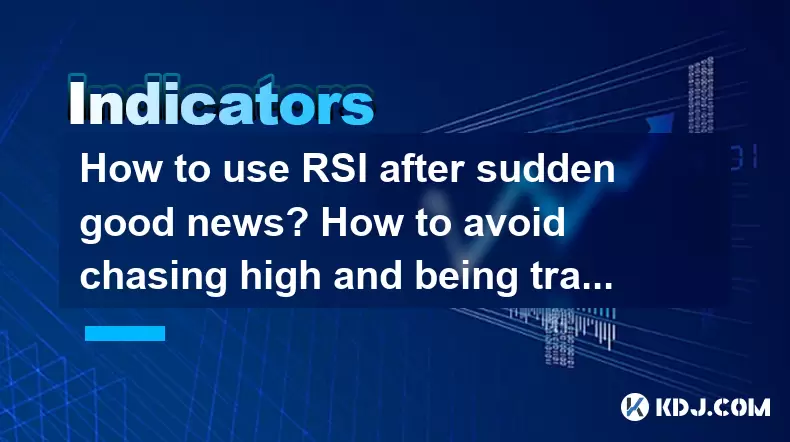
The Relative Strength Index (RSI) is a momentum oscillator that measures the speed and change of price movements. It is often used by traders to identify overbought or oversold conditions in the market, which can signal potential trend reversals. When sudden good news hits the cryptocurrency market, it can lead to rapid price increases, causing many traders to jump in and chase the high. However, this can lead to being trapped in a position if the price subsequently drops. This article will explore how to effectively use the RSI after sudden good news and strategies to avoid chasing highs and getting trapped.
Understanding RSI Basics
Before diving into the specifics of using RSI after good news, it's essential to understand the basics of the RSI. The RSI is calculated using the average gain and loss over a specific period, typically 14 days. The formula for RSI is as follows:
[ RSI = 100 - \frac{100}{1 + RS} ]
Where RS (Relative Strength) is the average gain divided by the average loss. The RSI value ranges from 0 to 100, with readings above 70 indicating overbought conditions and readings below 30 indicating oversold conditions.
Using RSI After Sudden Good News
When sudden good news causes a rapid price increase, the RSI can quickly enter overbought territory. Here’s how to use the RSI effectively in this scenario:
Monitor the RSI Value: After the news breaks, closely monitor the RSI. If the RSI quickly climbs above 70, it suggests that the asset may be overbought and due for a correction.
Look for Divergences: Pay attention to divergences between the price and the RSI. If the price continues to rise while the RSI starts to decline, this bearish divergence could signal an impending price drop.
Wait for Pullbacks: Instead of jumping into the market immediately after the news, wait for a pullback. If the RSI drops from overbought levels back towards 50 or lower, it could present a more favorable entry point.
Set Realistic Expectations: Understand that not all overbought conditions lead to immediate price corrections. Sometimes, the momentum can persist longer than expected, so set realistic expectations and use stop-loss orders to manage risk.
Avoiding Chasing Highs
Chasing highs is a common mistake that can lead to significant losses. Here are some strategies to avoid this pitfall:
Avoid FOMO (Fear of Missing Out): Emotional trading driven by FOMO can lead to chasing highs. Stick to your trading plan and avoid making impulsive decisions based on sudden price movements.
Use Technical Analysis: Combine RSI with other technical indicators like moving averages, MACD, or Bollinger Bands to get a more comprehensive view of the market. This can help you make more informed decisions rather than chasing a single indicator.
Set Entry and Exit Points: Before entering a trade, set clear entry and exit points based on your analysis. This discipline can help prevent you from entering a trade at a high point and getting trapped.
Practice Patience: Good trading opportunities arise frequently. Instead of chasing the current high, wait for the next opportunity that aligns better with your trading strategy.
Being Trapped and How to Avoid It
Being trapped in a position can be a frustrating experience, especially after entering a trade based on sudden good news. Here are some ways to avoid getting trapped:
Use Stop-Loss Orders: Always set stop-loss orders to limit potential losses. If the price drops after you enter a trade, the stop-loss order can help you exit the position before the loss becomes too significant.
Monitor Market Sentiment: Keep an eye on market sentiment and news flow. If the initial good news is followed by negative developments or a shift in sentiment, it might be wise to exit the trade.
Diversify Your Portfolio: Don’t put all your capital into one trade based on sudden news. Diversify your portfolio to spread the risk and avoid being overly exposed to a single asset.
Stay Informed but Don’t React Immediately: While staying informed about news is crucial, avoid reacting immediately to every piece of news. Take time to assess the situation and use your technical analysis tools to make a more informed decision.
Combining RSI with Other Indicators
Using the RSI in isolation can sometimes lead to false signals. Combining it with other indicators can enhance its effectiveness, especially after sudden good news. Here’s how to do it:
Moving Averages: Use moving averages to identify the overall trend. If the price is above a long-term moving average, it suggests a bullish trend, which can provide more context to the RSI readings.
MACD (Moving Average Convergence Divergence): The MACD can help confirm RSI signals. If the RSI indicates an overbought condition and the MACD shows a bearish crossover, it strengthens the case for a potential price drop.
Bollinger Bands: Bollinger Bands can help identify volatility and potential reversal points. If the price touches the upper Bollinger Band and the RSI is over 70, it could signal that the asset is overbought and due for a correction.
Practical Example of Using RSI After Good News
Let’s walk through a practical example of how to use RSI after sudden good news in the cryptocurrency market:
Scenario: A major cryptocurrency receives news of a partnership with a large financial institution, causing the price to surge by 20% in a short period.
Step-by-Step Process:
- Monitor RSI: After the news, the RSI quickly rises to 80, indicating overbought conditions.
- Look for Divergences: The price continues to rise, but the RSI starts to decline, showing a bearish divergence.
- Wait for Pullbacks: Instead of entering the market immediately, you wait for the RSI to drop back to around 60, which it does after a slight price correction.
- Enter the Trade: You enter the trade at the pullback, setting a stop-loss order just below the recent low to manage risk.
- Monitor and Adjust: Keep monitoring the RSI and other indicators. If the RSI drops further and the price shows signs of continued decline, consider exiting the trade or adjusting your stop-loss order.
Frequently Asked Questions
Q1: Can RSI be used effectively in all market conditions?
A1: While RSI is a versatile indicator, its effectiveness can vary depending on market conditions. In highly volatile markets, RSI might generate more false signals. It's best used in conjunction with other indicators and market analysis to improve accuracy.
Q2: How often should I check the RSI after entering a trade?
A2: The frequency of checking the RSI depends on your trading strategy and time frame. For short-term traders, checking the RSI every few hours or even more frequently might be necessary. For long-term traders, daily or weekly checks may suffice.
Q3: What other indicators can complement RSI for better decision-making?
A3: In addition to moving averages, MACD, and Bollinger Bands mentioned earlier, other indicators like the Stochastic Oscillator, Fibonacci retracement levels, and volume indicators can provide additional insights and help confirm RSI signals.
Q4: Is it possible to use RSI for cryptocurrencies that are less liquid?
A4: RSI can be used for less liquid cryptocurrencies, but the signals might be less reliable due to larger price gaps and less frequent trading. It's important to consider the liquidity and volatility of the asset when interpreting RSI readings.
Disclaimer:info@kdj.com
The information provided is not trading advice. kdj.com does not assume any responsibility for any investments made based on the information provided in this article. Cryptocurrencies are highly volatile and it is highly recommended that you invest with caution after thorough research!
If you believe that the content used on this website infringes your copyright, please contact us immediately (info@kdj.com) and we will delete it promptly.
- XRP Price Shows Signs of a Bullish Recovery, With Analysts Watching Levels for an Upside Breakout
- 2025-06-14 04:50:12
- XRP Price Shows Signs of a Bullish Recovery, as Analysts Watch Levels for an Upside Breakout
- 2025-06-14 04:50:12
- Leading Cryptocurrencies Dipped Despite Lower-Than-Expected Inflation and the New Trade Deal Announcement with China.
- 2025-06-14 04:45:12
- XRP Price Prediction: Can the Token Reach $73 This Cycle?
- 2025-06-14 04:40:12
- Bitcoin Hashrate Reaches All-Time High, Exceeding 943 EH/s
- 2025-06-14 04:40:12
- Bitcoin Hits Local ATH but Analysts Warn: Time to Sell and Watch Key Support
- 2025-06-14 04:35:13
Related knowledge

Is it an opportunity for the long positive line with large volume to break through the platform and then shrink back?
Jun 14,2025 at 04:42am
Understanding the Long Positive Line with Large VolumeIn technical analysis, a long positive line refers to a candlestick pattern where the closing price is significantly higher than the opening price, often indicating strong buying pressure. When this occurs alongside large volume, it suggests that market participants are actively involved in pushing t...
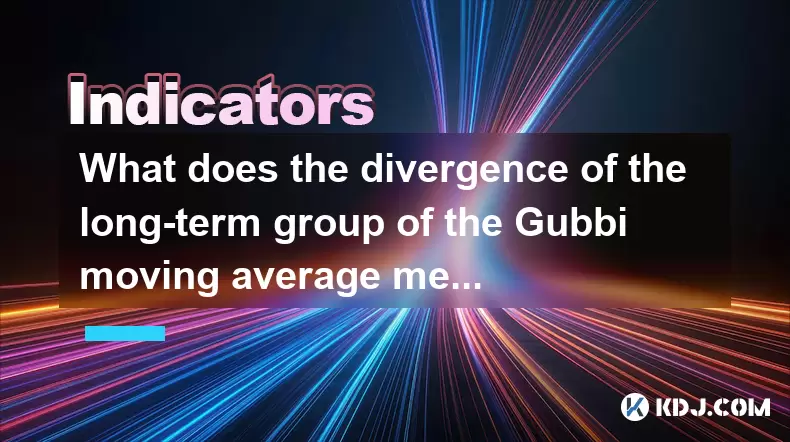
What does the divergence of the long-term group of the Gubbi moving average mean? How long can the trend last?
Jun 14,2025 at 02:56am
Understanding the Gubbi Moving AverageThe Gubbi moving average is a technical indicator used by traders in cryptocurrency markets to identify trends and potential reversals. Unlike traditional moving averages, the Gubbi variant incorporates unique calculations that emphasize price momentum and volatility adjustments. This makes it particularly useful fo...
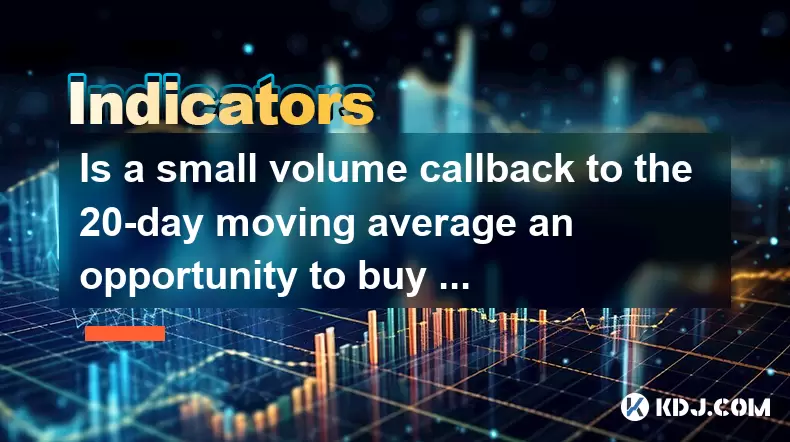
Is a small volume callback to the 20-day moving average an opportunity to buy low? What is the key to look at?
Jun 14,2025 at 02:28am
Understanding the 20-Day Moving Average in Cryptocurrency TradingIn cryptocurrency trading, the 20-day moving average (20DMA) is a commonly used technical indicator that helps traders assess the short-term trend of an asset. It calculates the average price of a cryptocurrency over the last 20 days and smooths out price volatility. When a coin experience...
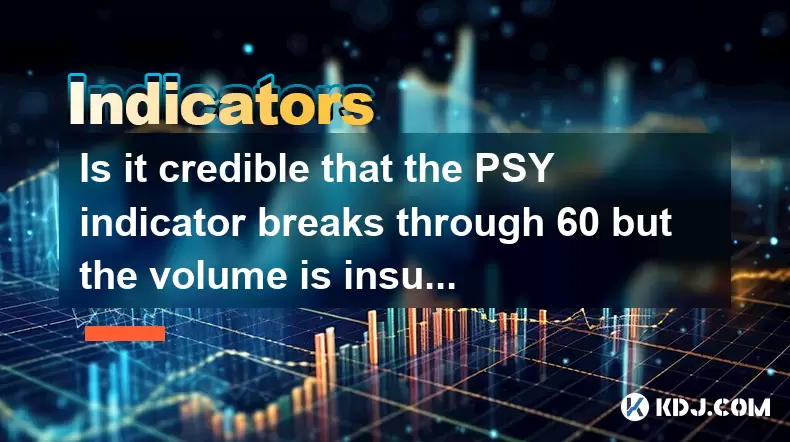
Is it credible that the PSY indicator breaks through 60 but the volume is insufficient?
Jun 14,2025 at 12:14am
Understanding the PSY Indicator in Cryptocurrency TradingThe Psychological Line (PSY) indicator is a momentum oscillator used primarily to measure the sentiment of traders and investors in financial markets, including the cryptocurrency space. It calculates the ratio of days where prices closed higher versus lower over a specified period, typically 12 o...
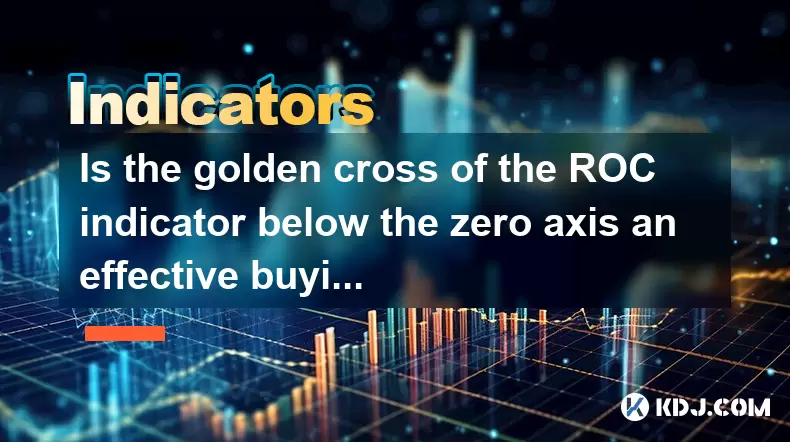
Is the golden cross of the ROC indicator below the zero axis an effective buying point?
Jun 14,2025 at 01:29am
Understanding the ROC Indicator and Its SignificanceThe Rate of Change (ROC) indicator is a momentum oscillator used in technical analysis to measure the percentage change in price between the current closing price and the closing price from a set number of periods ago. This tool helps traders assess the speed at which prices are changing, offering insi...
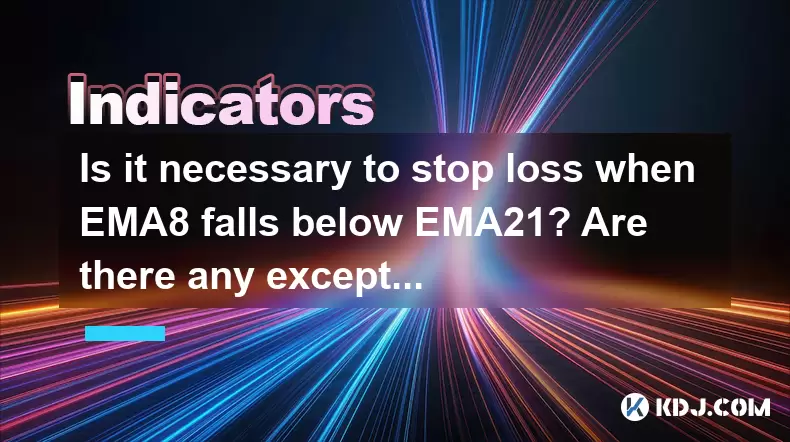
Is it necessary to stop loss when EMA8 falls below EMA21? Are there any exceptions?
Jun 14,2025 at 02:42am
Understanding EMA8 and EMA21 in Cryptocurrency TradingIn cryptocurrency trading, Exponential Moving Averages (EMAs) are widely used technical indicators to identify trends and potential reversal points. The EMA8 refers to the 8-period exponential moving average, while EMA21 is the 21-period EMA. These tools help traders make informed decisions by smooth...

Is it an opportunity for the long positive line with large volume to break through the platform and then shrink back?
Jun 14,2025 at 04:42am
Understanding the Long Positive Line with Large VolumeIn technical analysis, a long positive line refers to a candlestick pattern where the closing price is significantly higher than the opening price, often indicating strong buying pressure. When this occurs alongside large volume, it suggests that market participants are actively involved in pushing t...

What does the divergence of the long-term group of the Gubbi moving average mean? How long can the trend last?
Jun 14,2025 at 02:56am
Understanding the Gubbi Moving AverageThe Gubbi moving average is a technical indicator used by traders in cryptocurrency markets to identify trends and potential reversals. Unlike traditional moving averages, the Gubbi variant incorporates unique calculations that emphasize price momentum and volatility adjustments. This makes it particularly useful fo...

Is a small volume callback to the 20-day moving average an opportunity to buy low? What is the key to look at?
Jun 14,2025 at 02:28am
Understanding the 20-Day Moving Average in Cryptocurrency TradingIn cryptocurrency trading, the 20-day moving average (20DMA) is a commonly used technical indicator that helps traders assess the short-term trend of an asset. It calculates the average price of a cryptocurrency over the last 20 days and smooths out price volatility. When a coin experience...

Is it credible that the PSY indicator breaks through 60 but the volume is insufficient?
Jun 14,2025 at 12:14am
Understanding the PSY Indicator in Cryptocurrency TradingThe Psychological Line (PSY) indicator is a momentum oscillator used primarily to measure the sentiment of traders and investors in financial markets, including the cryptocurrency space. It calculates the ratio of days where prices closed higher versus lower over a specified period, typically 12 o...

Is the golden cross of the ROC indicator below the zero axis an effective buying point?
Jun 14,2025 at 01:29am
Understanding the ROC Indicator and Its SignificanceThe Rate of Change (ROC) indicator is a momentum oscillator used in technical analysis to measure the percentage change in price between the current closing price and the closing price from a set number of periods ago. This tool helps traders assess the speed at which prices are changing, offering insi...

Is it necessary to stop loss when EMA8 falls below EMA21? Are there any exceptions?
Jun 14,2025 at 02:42am
Understanding EMA8 and EMA21 in Cryptocurrency TradingIn cryptocurrency trading, Exponential Moving Averages (EMAs) are widely used technical indicators to identify trends and potential reversal points. The EMA8 refers to the 8-period exponential moving average, while EMA21 is the 21-period EMA. These tools help traders make informed decisions by smooth...
See all articles

























































































